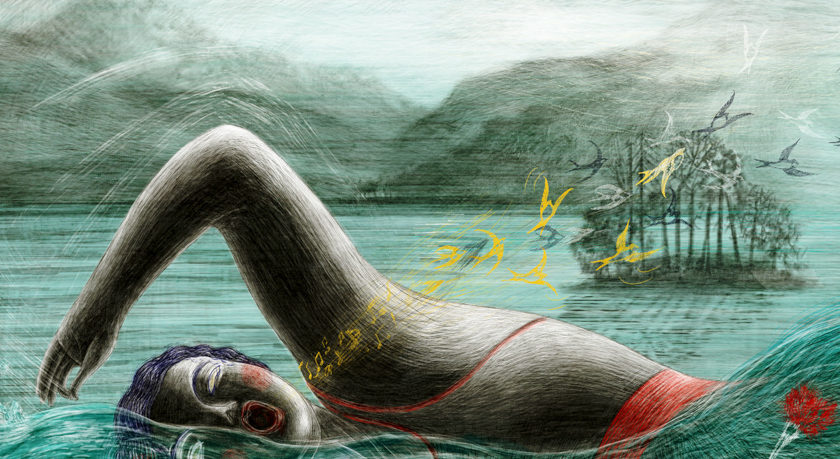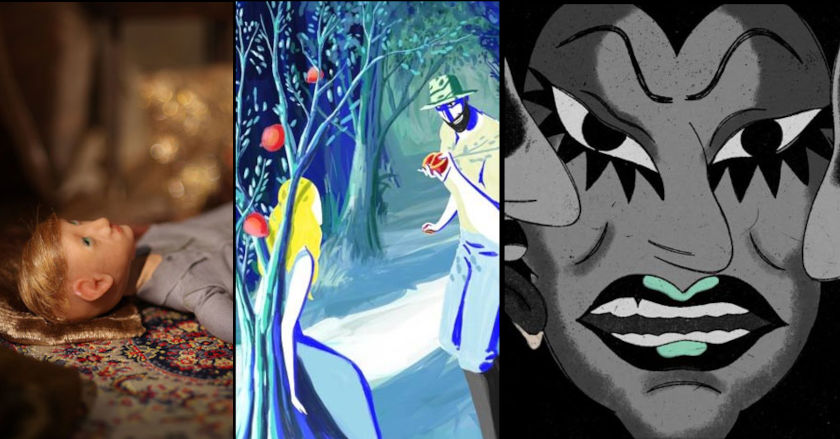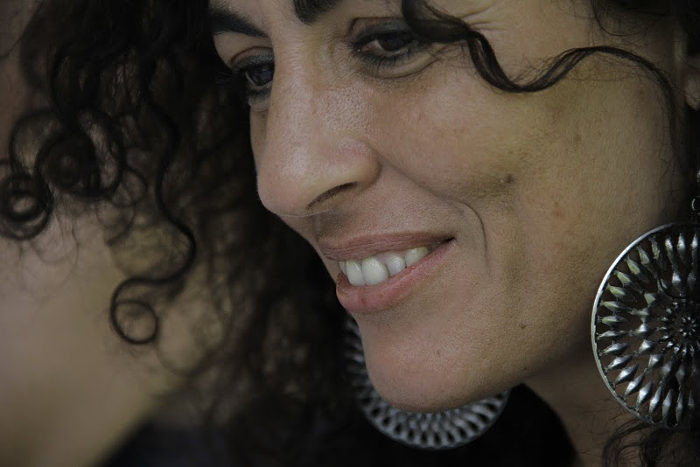Animation Museum: Casa Museu de Vilar (10 Years Anniversary) and Théâtre Optique by Abi Feijó
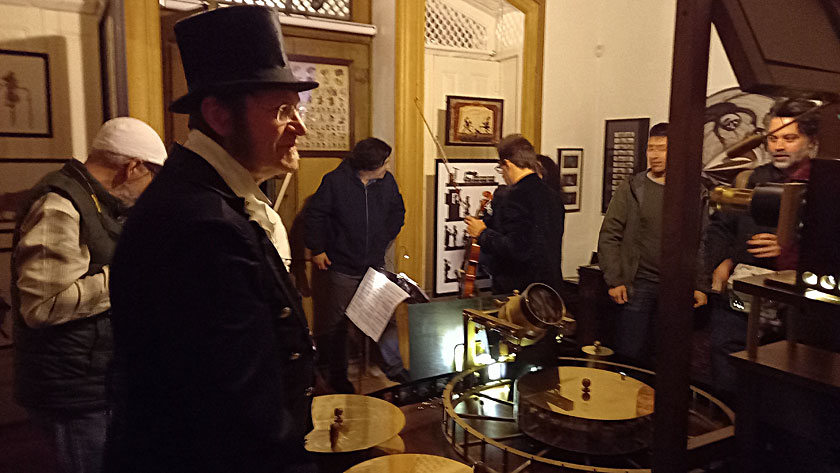
On May 18, 2024, the Casa Museu de Vilar (Vilar House Museum) completed ten years. It is a museum in the city of Lousada in Portugal, created and directed by none other than Abi Feijó and his companion, in every way, Regina Pessoa. For the anniversary celebration, there was an exhibition for the first time of the Théâtre Optique (Optical Theatre) built by Abi—that same one, a copy of Émile Reynaud's praxinoscope! I had the honor to participate in this event, and I bring to Zippy Frames readers and lovers of animated art the crème de la crème of what happened and my impressions of the event.
Initially, it is necessary to introduce the Casa Museu de Vilar. The museum is located in Lousada, in the North of Portugal, approximately one hour from Porto city. It is a large mansion, like an old little palace, owned by Feijó's family, and it is also the residence of Abi and Regina. The Museu de Vilar is an Abi project and has three distinct divisions. The first is about the pre-cinema period, with a magic lantern, phenakistoscopes, zoetropes, and other animated instruments from the 19th and 20th centuries. The other two divisions are for Abi and Regina's work and global animation.
I feel connected to the museum. I went there in 2014 and could see the entire ambiance still being remodeled, the animation pictures being separated and chosen. The following year, everything was ready, and the museum was already open. After that, I went back there three or four times, and I noticed how the museum acquired other toys and animated elements in its collection and how it has been growing and updated with other international works and their own. There, visitors can see panels explaining the technique used by Regina Pessoa and the originals of the cut-out 'Fado Lusitano' by Abi Feijó, and they also have the opportunity to face original drawings, such as 'When the Day Breaks' (1999, Wendy Tilby and Amanda Forbis), 'Ring of Fire' (2000, Andreas Hykade), and 'Bob's Birthday' (1995, Alison Snowden and David Fine), among others. I also noticed a turnover in the collection displayed to the public, so it keeps growing.
The museum is unmissable in every way. Besides, it is situated in a bucolic place surrounded by vines with a marvelous valley view, not to mention genuine Portuguese hospitality.
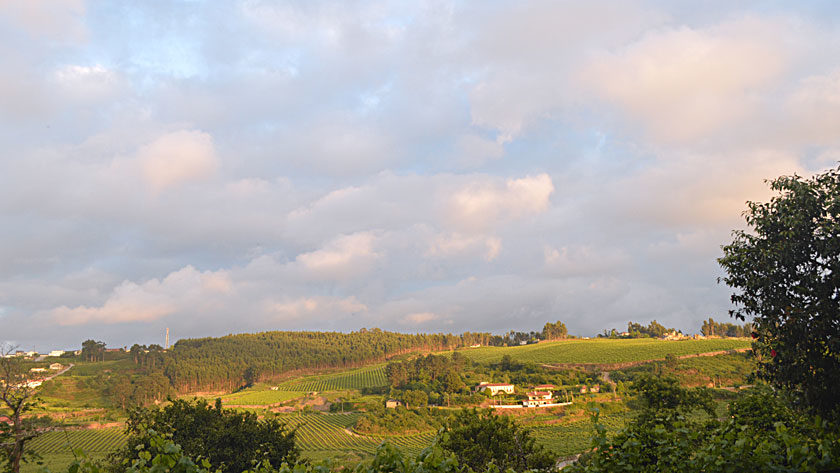
About the celebration: firstly, there was the 'Oficinoscope: 10 Years of Animation Cinema Workshop in Lousada' book release. It was published in partnership with the municipality and attended by Dr. António Augusto Silva, councilor for education at Lousada City Council, Abi Feijó, Jorge Carvalho, and Elsa Cerqueira ('Philosophy with Cinema for Children' project, and Global Teacher Prize Portugal 2021). The animator have been helping Elsa in the workshops. The book (Portuguese/English) is a collection of animated works made by public school students mentored by Abi Feijó and school teachers. That is one of the museum's activities.
The book is a beautiful work, both in terms of graphics (Abi graduated in Graphic Design) and content. Each listed animation has a QR code that allows the reader to watch the film. The workshops were so significant that now they take part of the region's school curriculum. Abi exhibited some of the students' films at the end of the book presentation.
Then, two simultaneous exhibitions occurred: the presentation of films made in the museum space, such as 'Ride' (Paul Bush), 'Uncle Thomas, Accounting for the Days' (Regina Pessoa), 'Amélia & Duarte' (Alice Guimarães & Mónica Santos), and the guided tour of the museum.
Watch a Tour of the Casa Museu de Vilar by Abi Feijó
I chose to revisit the museum because I was too curious to see the Théâtre Optique. And it was there, exactly like the original (except for 0.5 cm of a cylinder height measurement, according to Abi). Whether he had not told us, no one could know about this. That occurred because he started assembling the device without the technical drawings, which made his adventure more recognizable. Abi only got these drawings through Jean-Baptiste Garnero (CNC, France), after the praxinoscope construction process began. Mr. Garnero gave Abi access to the digitized images of the original 'Pauvre Pierrot' band from the Musée National des Arts et Métiers (Le Cnam), to Paul Leeman's drawings (of the central drum structuring the entire device and with indications of the characteristics of the lens), and to the original partiture of Gaston Paulin's music, which accompanied Reynaud's projections. Mr. Garnero also indicated the company that printed the image strip on special film (Traphot, Frédéric de Sousa).
Rebuilding the Optical Theatre has been Abi's idea since 2010, but only 11 years later, he could begin to make it a reality. That was possible with the support of ICA, Ad Hoc, the Ministry of Culture of Portugal, Festival Monstra (Fernando Galrito), and Casa da Animação (Regina Machado). Besides other institutional supports, such as the Cinematheques from Portugal (José Manuel Costa), Quebec (Marcel Jean), Berlin (Jurek Serth), Bologna (Luca Farinelli), the CNC, and Les Amis d'Emile Reynaud (Sylvie Saerens, great-granddaughter of Émile Reynaud).
Other people were also crucial to the praxinoscope production, such as Nuno Costa (who constructed the central drum), Paulo Silva (who designed the rest of the optical theater and constructed all mechanical parts), and VIMALVES (responsible for the wooden parts).

As you can see, it was a work of research, patience, curiosity, and collaboration.
However, the theater screening would be just at night, with the same mise-en-scéne as Reynaund's projection.
For those unaware, three years before the Lumière Brothers' cinematograph presentation, Émile Reynaud exhibited his Optical Theater (the praxinoscope) at the Musée Grévin in Paris, on October 28, 1892. He showed the images projected on a kind of screen where the public saw them on the other side of the screen (which did not happen at the museum due to the weather). When running the long strip (like a film) with drawings by the praxinoscope and each frame receiving the light, its images are projected by a set of mirrors until the images get on the screen. The praxinoscope has manual control through a set of two gears. Reynaud and, in this case, Abi, could accelerate or rewind the image by repeating the movement.
Moreover, it was an event. Abi, well-dressed like a master of ceremonies (a "performanceist," a performer + a projectionist, according to himself), showed off the realization of his dream. The animated tape presented one of Émile Reynaud's films that has stood the test of time, 'Pauvre Pierrot' (1892).
In his presentation, Abi highlighted that Reynaud's exhibition was a mark not only in animation history but also in the audiovisuals. This moving image projection was the first to be made public, and due to the similarity of the praxinoscope functioning to the principles of image projection, Reynaud created the so-called cinema. The difference between this and the Lumière Brothers' projection was the photography use—animated photographs. Photography was the Lumière family's business. Abi also recalled that when he was ASIFA's president, he created the 'International Animation Day' due to Reynaud's projection.
The performance artist started to turn both gears simultaneously, accompanied by the musicians as it happened in Reynaud's time and started the show. Despite Abi's excuses, since he did not have enough time to rehearse with the musicians (he received the animation strip two days before), the entire presentation was breathtaking!
An excerpt from the presentation
Samuel Martins Coelho was responsible for the musical arrangement based on Gaston Paulin's partiture and the reconstruction of 'Pauvre Pierrot' was carried out by Julian Pappé, who performed live on his violin, accompanied on the cello by Carina Albuquerque.
It is exciting to see a live exhibition that is so artisanal (in the age of smartphones and AI) in an ancient house with all those optical toys surrounding it. It was like a time travel as if I were present at Reynaud's projection in 1892. For me, it was particularly moving.
However, Abi had a second exhibition for us, a magic lantern presentation, by him and Elsa Cerqueira with her plaques. It was so significant to experience these types of exhibitions, as they show that human inventiveness has always existed beyond mobiles.
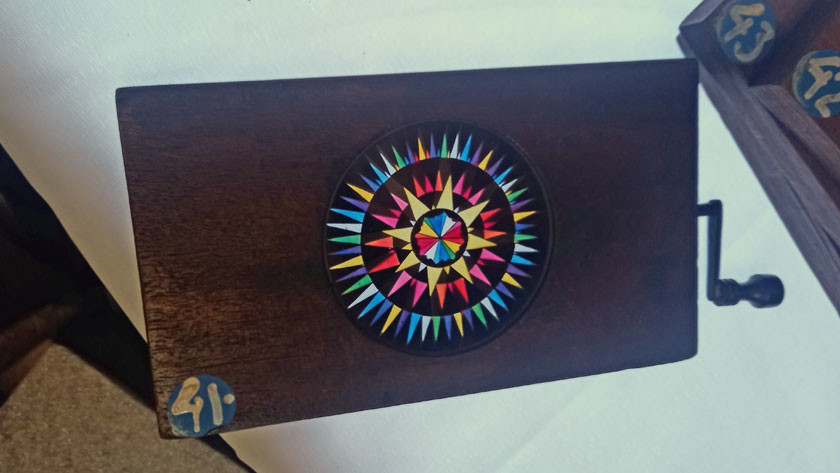

Unlike the praxinoscope, the magic lanterns are smaller and often run with sophisticated mechanized plate projectors that allow several different movements for the same plate inserted into the lantern lens. The musicians also followed this show, but Abi Feijó handled the sound effects. As a showman, he was himself. Although his talent as an animator was well known, we also learned he is a fantastic live sound designer.
Another surprising moment: around 50 people from the 21st century were sitting in the library of the old house watching a magic lantern projection. And we were ecstatic, perhaps even more so, than the 18th–19th-century audience. Despite all the technology we have nowadays, the magic lantern mechanical images seduced everyone.
To finish the night, fifteen minutes before midnight, a meteorite crossed the skies of Portugal, enlightening it in blue. Even the universe thought it was a memorable event. Congratulations to Casa Museu de Vilar and everyone who participated in these moments.
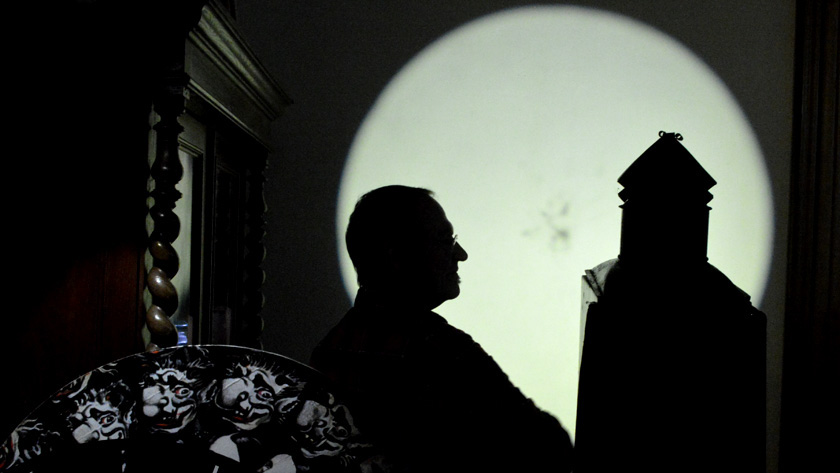
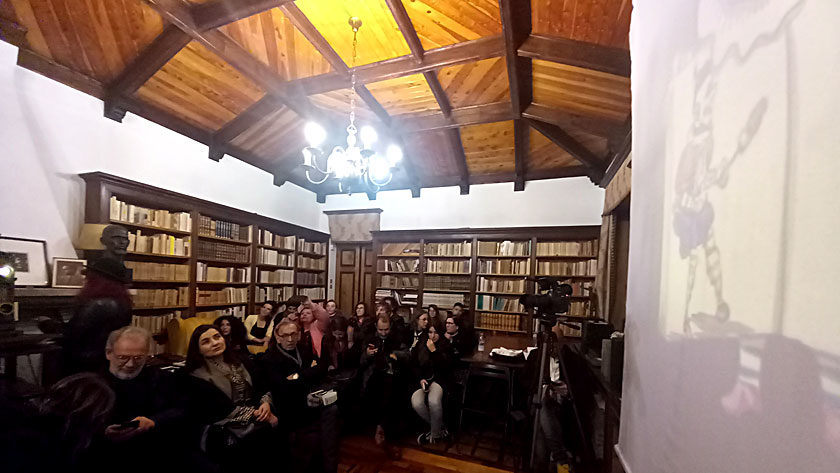
contributed by: Eliane Gordeeff, photos by Claudio Roberto





